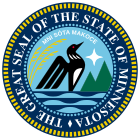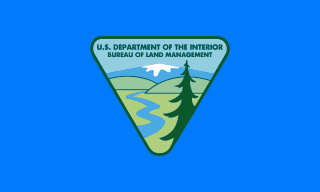
The Bureau of Land Management (BLM) is an agency within the United States Department of the Interior responsible for administering U.S. federal lands. Headquartered in Washington, D.C., the BLM oversees more than 247.3 million acres (1,001,000 km2) of land, or one-eighth of the United States's total landmass.
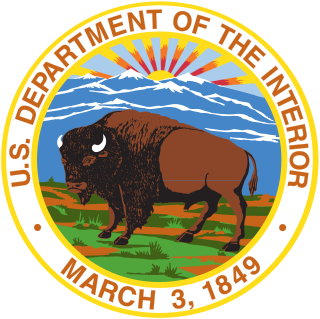
The United States Department of the Interior (DOI) is an executive department of the U.S. federal government responsible for the management and conservation of most federal lands and natural resources. It also administers programs relating to Native Americans, Alaska Natives, Native Hawaiians, territorial affairs, and insular areas of the United States, as well as programs related to historic preservation. About 75% of federal public land is managed by the department, with most of the remainder managed by the Department of Agriculture's Forest Service. The department was created on March 3, 1849. It is headquartered at the Main Interior Building, located at 1849 C Street NW in Washington, D.C.
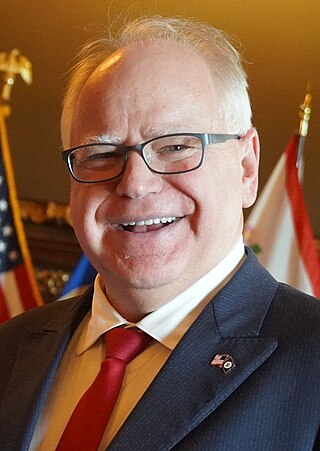
The governor of Minnesota is the head of government of the U.S. state of Minnesota, leading the state's executive branch. Forty people have been governor of Minnesota, though historically there were also three governors of Minnesota Territory. Alexander Ramsey, the first territorial governor, also served as state governor several years later. State governors are elected to office by popular vote, but territorial governors were appointed to the office by the United States president. The current governor of Minnesota is Tim Walz of the Democratic-Farmer-Labor Party (DFL).

The North Carolina Council of State is the collective body of ten elective executive offices in the state government of North Carolina, all of which are established by the state constitution. The Council of State includes the Governor, Lieutenant Governor, Secretary of State, State Auditor, Treasurer, Superintendent of Public Instruction, Attorney General, Commissioner of Agriculture, Commissioner of Labor, and Commissioner of Insurance. Together with the North Carolina Cabinet and several independent agencies, the Council of State offices constitute the executive branch of North Carolina's state government.

The lieutenant governor of Minnesota is a constitutional officer in the executive branch of the U.S. state of Minnesota. Fifty individuals have held the office of lieutenant governor since statehood. The incumbent is Peggy Flanagan, a DFLer and the first Native American elected to a statewide executive office in Minnesota's history.

The New York State Office of Parks, Recreation and Historic Preservation is a state agency within the New York State Executive Department charged with the operation of state parks and historic sites within the U.S. state of New York. As of 2014, the NYS OPRHP manages nearly 335,000 acres of public lands and facilities, including 180 state parks and 35 historic sites, that are visited by over 78 million visitors each year.

The secretary of state of Minnesota is a constitutional officer in the executive branch of government of the U.S. state of Minnesota. Twenty-two individuals have held the office of secretary of state since statehood. The incumbent is Steve Simon, a member of the Minnesota Democratic-Farmer-Labor Party.

The secretary of state is an official in the state governments of 47 of the 50 states of the United States, as well as Puerto Rico and other U.S. possessions. In Massachusetts, Pennsylvania, and Virginia, this official is called the secretary of the commonwealth. In states that have one, the secretary of state is the chief administrative officer of the state and is often the primary custodian of important state records. In the states of Alaska, Hawaii, and Utah, there is no secretary of state; in those states many duties that a secretary of state might normally execute fall within the domain of the lieutenant governor. Like the lieutenant governor, in most states, the secretary of state is in the line of succession to succeed the governor, in most cases immediately behind the lieutenant governor. In three states with no lieutenant governor as well as the U.S. territory of Puerto Rico, the secretary of state is first in the line of succession in the event of a gubernatorial vacancy.

The state auditor of Minnesota is a constitutional officer in the executive branch of the U.S. state of Minnesota. Nineteen individuals have held the office of state auditor since statehood. The incumbent is Julie Blaha, a DFLer.

The government of Texas operates under the Constitution of Texas and consists of a unitary democratic state government operating under a presidential system that uses the Dillon Rule, as well as governments at the county and municipal levels.
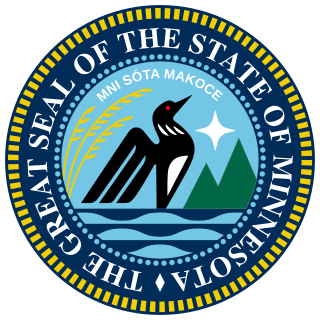
The state treasurer of Minnesota was a constitutional officer in the executive branch of the U.S. state of Minnesota. Twenty-six individuals occupied the office of state treasurer from 1858 until the office's abolition in 2003. The final state treasurer was Carol C. Johnson, a DFLer.
The Florida Division of Emergency Management (DEM) is charged with maintaining a comprehensive statewide program of emergency management. The division ensures that Florida is prepared to respond to emergencies, recover from them, and mitigate their impacts. DEM is responsible for the State Emergency Response Team (SERT) which is composed of various intergovernmental entities, volunteers, and the private sector. The division coordinates the efforts of the Federal Government with other departments and agencies of state government, with county and municipal governments and school boards, and with private agencies that have a role in emergency management. The Director is appointed by the Governor of Florida, and serves as an agency head. Kevin Guthrie currently serves as the Director. He was appointed by Governor Ron DeSantis in May 2021.

The Hawaii Department of Land and Natural Resources (DLNR) is a part of the Hawaii state government dedicated to managing, administering, and exercising control over public lands, water resources and streams, ocean waters, coastal areas, minerals, and other natural resources of the State of Hawaiʻi. The mission of the Hawaiʻi Department of Land and Natural Resources is to "enhance, protect, conserve and manage Hawaiʻi's unique and limited natural, cultural and historic resources held in public trust for current and future generations of the people of Hawaiʻi nei, and its visitors, in partnership with others from the public and private sectors." The organization oversees over 1.3 million acres of land, beaches, and coastal waters and 750 miles of coastal land.

The secretary of state of Washington is an independently elected constitutional officer in the executive branch of the government of the U.S. state of Washington. Fifteen individuals have held the office of Secretary of State since statehood. The incumbent is Steve Hobbs, a Democrat.

The Oklahoma Commissioners of the Land Office is an agency of the government of Oklahoma. The Land Office was created by the Oklahoma Constitution and is responsible for managing and controlling lands and funds granted to the state under the provisions of the Oklahoma Organic Act. These lands and fund are used to support common schools, colleges and universities. The Commissioners of the Land Office distributes over $125 million each year to K-12 schools and qualifying higher education institutions across the state.

The executive branch of the government of Puerto Rico is responsible for executing the laws of Puerto Rico, as well as causing them to be executed. Article IV of the Constitution of Puerto Rico vests the executive power on the Governor—whom by its nature forms the executive branch.

The New Mexico Commissioner of Public Lands is an elected constitutional officer in the executive branch in charge of managing all state lands and mineral rights, as well as overseeing leases and royalties on state land, in the U.S. state of New Mexico. The Commissioner of Public Lands is elected to a four-year term and is able to serve up to two consecutive terms; more terms may be served after one full term has intervened.

The Washington state treasurer is an elected constitutional officer in the executive branch of the U.S. state of Washington. Twenty-two individuals have held the office since statehood. The incumbent is Mike Pellicciotti, a Democrat who began his term in January 2021. The treasurer's office is located in the Washington State Capitol.
The following is the planned order of succession for the governorships of the 50 U.S. states, Washington, D.C., and the five organized territories of the United States, according to the constitutions of each. Some states make a distinction whether the succeeding individual is acting as governor or becomes governor.
